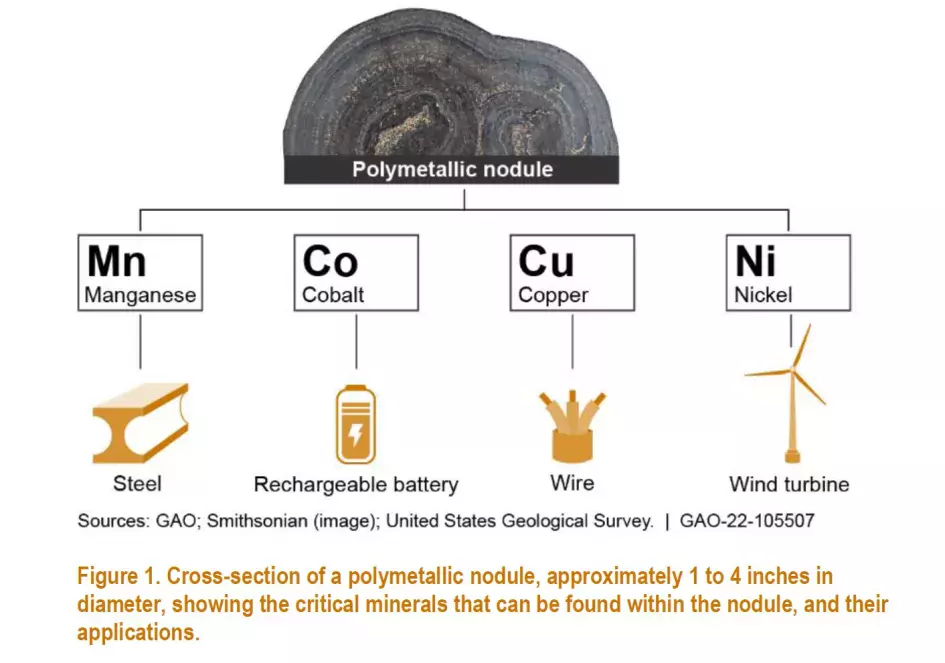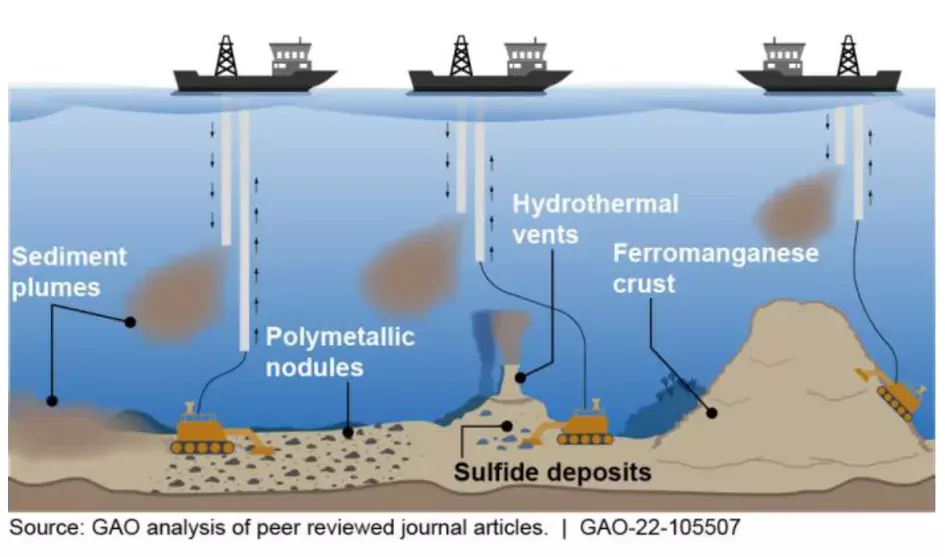Deep-Sea Mining Could Help Meet Demand for Critical Minerals, But Also Comes with Serious Obstacles
Deep below the sea lay critical minerals that are both high in value and demand.
These critical minerals—such as cobalt, nickel, and manganese—are used in everyday devices like cellphones and cars. But they are hard to come by, and demand is expected to double or triple by 2030.
Because of this demand, interest has turned toward the deep ocean seabed, which contains vast quantities of critical and other minerals.
Today’s WatchBlog post looks at our new Science & Tech Spotlight on deep-sea mining—how it works and its challenges.
Image

Where are the deep-sea minerals located?
The deep sea contains three primary sources for mining critical minerals:
- potato-size manganese nodules (rich in manganese, cobalt, copper, nickel, and rare earth elements);
- deposits of sulfur-containing minerals around underwater openings known as hydrothermal vents; and
- cobalt-rich crusts lining the sides of mid-ocean ridges and underwater mountains, also known as seamounts.
Many of these deposits are located in international waters, and can be hundreds to thousands of miles from shore. In fact, the Clarion-Clipperton Zone spans 1.7 million square miles between Hawaii and Mexico, and it is a potential hotbed for critical minerals.
How does deep-sea mining work?
A number of countries (including the U.S.) and private companies have invested in developing technology to explore the deep-sea environment and locate potential mining sites. However, no deep-sea commercial mining operations have been established yet.
Any future deep-sea mining efforts would need to overcome the obstacles of the deep seas’ extreme environment. This environment includes cold temperatures, extreme pressure, and no sunlight.
The designs for mining include remotely-operated extraction devices that dredge the ocean floor or seamount crust. Picture an underwater robot vacuuming the ocean floor, like a sea Roomba. These extraction devices would attach to hydraulic lifting systems to carry the extracted material (nodules, sediment, and/or pieces of crust) to surface mining ships or floating platforms for minimal processing before being transferred to land for further refining.
Examples of extraction systems for deep-sea mining
Image

What challenges exist for establishing deep-sea mining?
Deep-sea mining could have environmental effects, such as stirring up sediment clouds that could spread toxic heavy metals.
Mining noise and lights could affect sea life, and could destroy habitats on the ocean floor, around hydrothermal vents, and on seamounts and ridges. Specifically, the deep-sea floor is home to a lot of unique species. For example, clams, mussels, shrimp, and gigantic worms thrive around hydrothermal vents while crabs, corals, anemones, and sea stars make the walls of seamounts their home. Researchers do not yet know the long-term effect of habitat loss for these creatures and how such loss could affect ecosystems and people.
On the other hand, deep-sea mining could lead to decreased demand for land-based mining, which has negatively affected the terrestrial environment. Potential effects of land-based mining include toxic wastewater, deforestation, and soil contamination, as well as issues such as the use of child labor in some parts of the world. Deep-sea mining could reduce these negative effects and also enable the U.S. to decrease its dependence on foreign imports of critical and other minerals.
Finally, according to industry experts, U.S. companies operating in international waters could face legal uncertainties. Specifically, the U.S. has agreements with some countries but is not a party to the United Nations Convention on the Law of the Sea and its related International Seabed Authority, which regulates and controls mining of the international seabed area between member countries.
Key questions for policymakers
Deep-sea mining is a potential source of critical and other minerals that may enable new technologies, such as extended-range electric cars, lighter rechargeable batteries, and more weather-resistant wind turbines. However, as this technology matures, policymakers should weigh its benefits and costs.
Some key questions for policymakers include:
- Whether more research is needed to understand the environmental effects and potential ways to mitigate them;
- How legal uncertainties could be addressed; and
- What other potential barriers exist that may affect the viability of deep-sea mining.
Find out more about deep-sea mining by checking out our new Science & Tech Spotlight.
- Comments on GAO’s WatchBlog? Contact blog@gao.gov.





